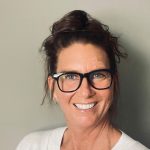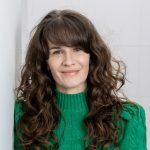Cheng receives Shaw Scientist Award to study why some breast cancer cells survive radiation
MILWAUKEE_Qingsu Cheng, a researcher in UWM’s College of Engineering & Applied Science, is investigating why some breast cancer cells go dormant to hide from radiation treatment – only to “wake up” later and revive malignancy.
The annual award, established by the late James D. and Dorothy Shaw, supports research in biochemistry, biological sciences and cancer research by early career scientists at UW-Madison and UW-Milwaukee.
Cheng hopes to explain why 40% to 50% of breast cancers return after a period of remission. He will seek to determine whether a certain kind of cell, called a fibroblast, might be helping cancer cells’ work-around during radiation exposure.
Cancer’s effect on fibroblasts
Fibroblasts are normally part of the body’s healing system. But in cancer, tumors can hijack fibroblasts, reprogramming them from defenders into promoters that help cancer grow, spread and resist treatment.
“We know some parts of the story, but not all of it,” Cheng said. “If we can stop cancer cells from going dormant in the first place, we might reduce the chance of the cancer coming back after successful treatment.”
Radiation is a powerful tool in the fight against cancer because it can reach deep into tissues and destroy cancer cells. But some cells survive. Cheng wants to know: What exactly happens at the cellular level when radiation penetrates the tumor’s microenvironment? And are fibroblasts somehow being recruited to help in the process of dormancy?
Other factors
His lab will also explore what revives these hidden cells and how the body’s circulatory system may be involved in helping cancer cells spread or resist treatment during radiation exposure.
Some people are more susceptible to the radiation than others, but little is known about why. Findings of this project could provide clues.
The project also will look at high-density breast tissue, which tends to contain more reprogrammed fibroblasts and is a known risk factor for developing breast cancer. It may also play a role in why some cancers return after treatment.
“By understanding the microenvironment around tumors, we can start to identify new targets for treatment,” Cheng said. Once those targets are known, he plans to test potential drugs or therapies to stop cancer from hiding.
NOTE: This press release was submitted to Urban Milwaukee and was not written by an Urban Milwaukee writer. While it is believed to be reliable, Urban Milwaukee does not guarantee its accuracy or completeness.





















